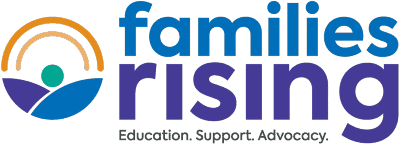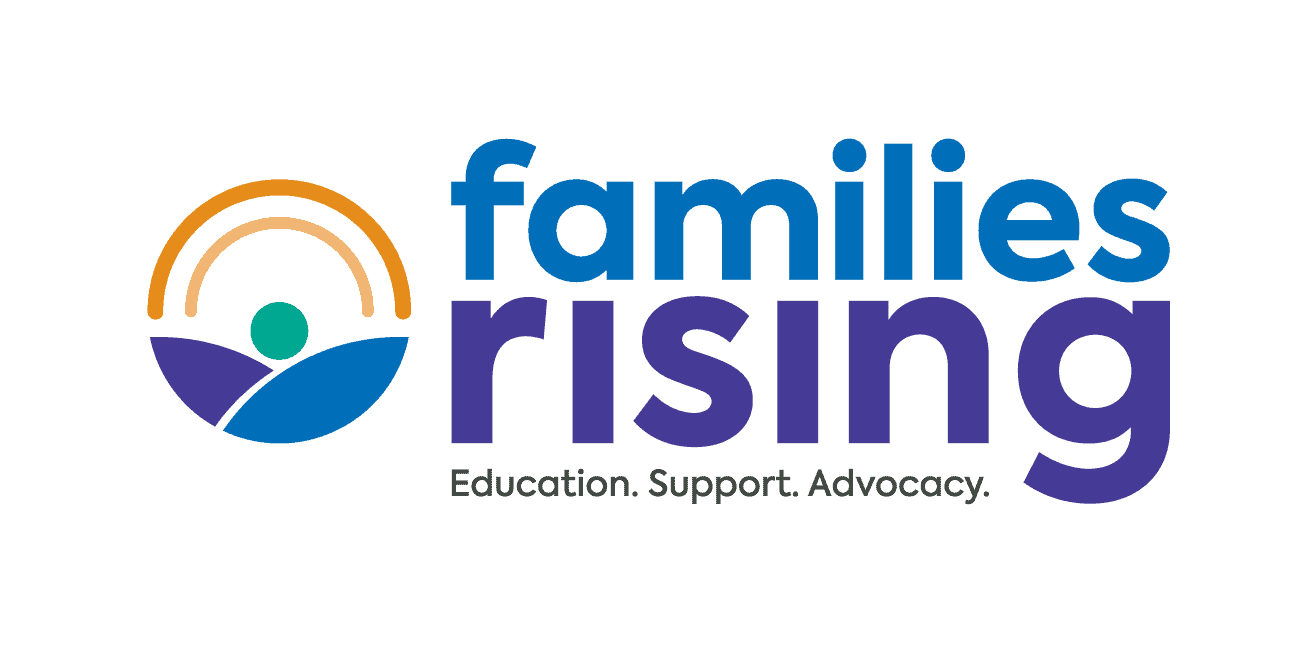A couple of years ago, a handful of child welfare professionals in New Mexico—including some who were foster/adoptive parents—had a brainstorming session to discuss the question, “How can we address the problem of grief and loss for families in the state’s foster care system?” The questions came about during work to develop a concurrent planning model for the state of New Mexico as part of the Step Up! Diligent Recruitment Grant. The group was very aware of the emotional toll on children and parents who experience ever-changing families, and decided to pursue a path to help foster families address this particular trauma and stay emotionally healthy. As a result, the state of New Mexico created Project Valor, a support system designed to address grief and loss for foster parents, children in care, and other children in the home.
Deep Losses Come with Foster Care Moves
When children leave a foster family, bags are packed, hugs are given, and they are gone, often with little notice. There is rarely contact after children leave. Foster parents and other children in the home may never hear how the child who left is doing. Hearts break and tears flow and before there is time to dry them, another call comes in. Another child needs a refuge, maybe for a day, maybe forever. Imagine these parents pouring their time, energy, and love into a child (or children) over a period of months or days or years, meeting their medical and dental needs, responding to trauma, and addressing school issues, but mostly hoping to show kids that the world can be safe, people can be kind, mistakes can be mended, and adults can be trusted. And then they are gone. It can be a thankless, gut-wrenching task. Parents know this when they sign on, of course. It’s the price they must pay to help a child. But it’s also why many people can’t fathom this life and is part of why there is a shortage of foster homes.
Or consider it from the child’s perspective: the initial and sudden assault by the system leaves you in a strange place, with unknown people who smell weird, look unfamiliar and scary, and eat food you don’t like. You are disoriented, in shock, and feeling alone. You lose innumerable things—the neighborhood cat you would pet when you were sad, the classmate you giggled with, your cousins, your favorite snack, your favorite shoes, your routine, your role in your family, the music on your car radio, your bed, and your mom or dad. In their place are strange customs, new rules, words you don’t understand, and food you think is yucky. Above all—there is loss and grief that can be overpowering and consuming.
By the same token, how often do we acknowledge the deep losses to the other children in a foster home? The loss of attention, of quiet, of ownership, privacy, or routine when a new child comes? The courage it takes to embrace a new child into your family circle and then have her leave as if she had never been there? Do we stop and take the time to process all of that hurt? Or do we move on, bury the pain, ignore the sick stomach, bursts of frustration, and growing depression and pretend we’re all fine?
And of course we can’t forget the child’s original family, those who are too often seen as the villain or just an onlooker. How often do we help foster parents consider the deep losses inflicted on this family? How do they feel when their child changes, talks about fun outings or holidays without them, uses unfamiliar phrases from a different culture, wears clothes picked out by someone else, or calls someone else “mom”? What does it feel like to see your child start to thrive at someone else’s house, when you couldn’t keep them safe in yours?
Designing a Program to Address These Cumulative Losses
These were the problems that the small group of people tossed around as they put their heads together to find a way to help. To come up with a solution, professionals from the Adoption Exchange; the Children, Youth and Families Department; the Child’s Grief Center; and the La Familia/Fiesta Project developed a monthly support group model that would address all of this grief and loss. The result was Project Valor, a 12-month program focused on helping children and their foster families cope with grief using an activity-based curriculum. By focusing on the children as the primary recipient, the planners thought, foster parents would be more likely to participate.
A team of professionals designed a detailed curriculum and fact sheets (also translated into Spanish) to guide the monthly support groups. The groups—one for children ages 6 to 18, and one for parents—are led by experienced foster parent staff members (called family contacts) based on a detailed curriculum. The children’s group includes all of the children in the family—foster, biological, adopted, and kinship. After a short ice-breaker and discussion about group values, the group conducts a planned activity designed to focus on various aspects of grieving.
Each month’s group and activity focus on a different topic such as the following:
- Changes and secondary losses — Children and youth explore how things have changed at home by using a floor plan handout. They also play a game in which one person leaves the room and then changes something about themselves (takes off jewelry, puts shoes on wrong feet, etc.) and the group guesses what is different.
- What is grief? — Participants review a handout with the common grief responses and then circle those they have experienced.
- Expressing emotions — The children create a sand-in-a-bottle craft, assigning each color of sand to a different emotion.
- Forgiving — Using dissolving paper, participants write a letter to someone they feel has caused them pain.
- Family dynamics — Each child creates a family totem.
- Unfinished business — The group members each make a map of their heart using a handout.
While the kids are engaged in their activities, facilitators provide compassionate support and discuss the topic in an age-appropriate way. The session ends with a 15-minute wrap-up during which facilitators review materials covered and participants discuss the theme.
In a separate space, the parents discuss the monthly topic and do the same activities as their children. Exploring the grief and loss issues the children are examining serves two purposes: it creates a great opportunity for further discussion between the children and parents during the month, and it gives the parents a chance to think about their own grief journey. Parents feel safe sharing their emotions in the group because all members and facilitators are also current or previous foster parents, and they understand one another’s experiences in ways other people can’t.
Parents are also invited to attend a separate three-hour training on grief and loss, led by the family contact staff members. Child care is provided so parents don’t have the extra concern of finding someone to watch their children. Using a framework based on the seven stages of placement—adjusting and assessment, similarities and differences, settling in, working toward healing, maintaining the placement, transitioning, and letting go—participants explore the different ways the members of the foster care constellation could be experiencing grief or loss at each stage.
For example, participants are asked to think about how birth parents might feel during the similarities and differences stage if their child lets them know that they now have a puppy in their foster home. How would the child feel during the settling-in stage when they are starting to connect with foster parents and their loyalties are questioned? The trainers also talk about:
- The stages of grief (numbing, pining, disorganization and despair, and reorganization)
- Factors that affect grief and loss, including the nature of the child’s attachment, the manner in which the child was placed, personalities of family members and others
- The four tasks of grieving (accept the reality of the loss, address the pain, adjust to the external and internal environment, and find an enduring connection and move forward)
The training starts by looking at all of the people affected and then gradually moves to a more personal level for the foster parent. How does a foster parent know if she needs to take a few months to grieve and provide healing for the whole family before accepting a new placement? What should a parent do to allow himself to be sad, do the work of grieving, and move ahead?
Although the program doesn’t have the ability to serve birth parents, the curriculum and facilitators ensure that participants are thinking about birth parents’ perspective and imagining their grief and loss.
At the end of the 12-month period, participants have access to continued support from the family contacts, who are also known as regional mentors.
Taking the Program Statewide
In 2015, the New Mexico Children, Youth and Families Department, the Adoption Exchange, and La Familia partnered to fund, develop, and implement Project Valor in five counties as part of the Step Up! Diligent Recruitment Grant. The Step Up! Project is a collaborative agreement between the New Mexico Children, Youth and Families Department and the Children’s Bureau. Project Valor’s evaluation showed promising results indicating that such grief and loss support for foster families is necessary and beneficial. Survey results indicated that respondents most valued being able to share with others, listening to others share their stories, seeing placements from all sides, and learning that others also experience loss and grief.
Participating foster parents explained how much Project Valor helped them:
“I didn’t know it was ok to have a hard time after kids left my home. I thought people would judge me and tell me I wasn’t cut out to be a foster parent.”
“This gave my bio kids a safe place to talk about how hard foster care is for them. They miss the kids who used to be here and sometimes wish the kids who are here would leave. The activities helped them talk to me about the hard stuff.”
“Knowing I’m not alone helps me continue to foster.”
Given the positive results of the pilot, New Mexico is committed to find ways to support foster families, and will soon expand the program. The program will be managed by a private agency, La Familia, Inc., through a contract with and funding from the Children, Youth and Families Department. The program, Foster Family Support Services, will incorporate several other supports for foster families, including a dedicated website, monitored Facebook support group, and warmlines staffed by the family contacts. Through the warmlines, foster parents will be able to ask questions and find help if they or their children are struggling with loss between Project Valor meetings.
By acknowledging and responding to the grief and loss that are a natural part of foster care, the child welfare system in New Mexico is helping to ensure the well-being of children and youth and to support families who are caring for some of the state’s most vulnerable residents. The project has shown that helping parents heal from their own losses not only helps them remain committed to foster parenting but also better equips them to help their children process their own grief. Project Valor is a valuable tool in the effort to find, develop, and support families for children in care.


